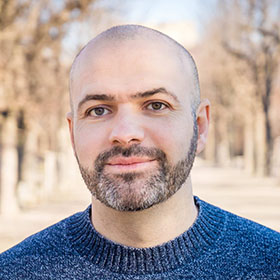

„The Grinberg Method taught me how to accept pain, to treat it as a friend and not as an enemy. Pain warns you about problems in your organism; it teaches you to take care of your body, so it’s a messenger you should listen to. Alex helped me to listen to my pain, explore it instead of fighting it or numbing it. He is a great guide through the mysteries of the body.“ - Ewa
„Coming back to myself, coming home, arriving - again. That feels good.“ - Marc
„The feeling you get when you notice how the energy begins to flow in your body in indescribable. I have never felt anything like it in such intensity.
It was the first time in a long time that I could feel my body again and it helped me understand what it needed. You need to experience it yourself to understand what can happen in a session and in your body.“ - Julia
„For me, the Grinberg Method is important and rewarding, because it lets me feel very clearly what matters. I have a tendency to over-analyse and to confuse my intuition with lists of pros and cons. Working with Alex has helped me tremendously to ground myself, to be more aware of my needs and to be able to take clear decisions.“ - Johanna
„The Grinberg Method has helped me to be more aware of and understand my body better so I can be more caring with myself. A good new attitude towards life.“ - Ruth
„With empathy and skill, Alex has shown me precisely that my chronic blocks were caused by my mind.“ - Edith




